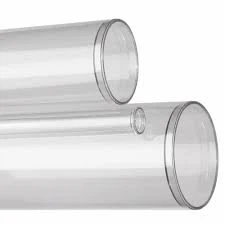Dec . 10, 2024 09:43 Back to list
High Performance Polyethylene Sheets for Versatile Applications and Durability
High-Density Polyethylene Board An Overview of its Features and Applications
High-Density Polyethylene (HDPE) boards are synthetic materials that have gained prominence in a multitude of industries due to their remarkable properties and versatility. As a thermoplastic polymer made from petroleum, HDPE is characterized by its high strength-to-density ratio, which contributes to its wide range of applications, from construction to packaging. This article delves into the features of HDPE boards, their manufacturing process, and their various applications.
Key Features of HDPE Boards
1. Durability One of the primary advantages of HDPE boards is their durability. They are resistant to impact, abrasion, and various environmental conditions, making them suitable for both indoor and outdoor use. Unlike traditional wood products, HDPE does not crack, splinter, or fade, which significantly extends its lifespan.
2. Chemical Resistance HDPE boards exhibit excellent resistance to a broad range of chemicals, including acids, bases, and solvents. This property makes them ideal for industries that deal with hazardous materials, as they can withstand corrosive substances without degrading or compromising their structural integrity.
3. Waterproof The non-porous nature of HDPE means that these boards are impervious to water, preventing absorption, warping, or mold growth. This feature is particularly beneficial for applications in wet environments or areas prone to moisture.
4. Lightweight While being robust, HDPE boards are lightweight compared to other materials like metal or wood. This characteristic makes them easier to transport and handle, which can lead to lower transportation costs and simplified installation processes.
5. Recyclability Given the increasing importance of sustainability, HDPE boards are a popular choice due to their recyclability. They can be reprocessed and repurposed, contributing to a circular economy and reducing the environmental impact associated with waste.
Manufacturing Process
The manufacturing of HDPE boards involves a few key steps. First, the polymer is created through the polymerization of ethylene, which can be sourced from natural gas or crude oil. Once produced, the HDPE is extruded into sheets of various thicknesses, allowing for customization based on the specific requirements of applications. The extrusion process ensures that the boards have a consistent density and thickness, which is crucial for maintaining quality in final products.
high density polyethylene board

After extrusion, HDPE boards can be further treated or coated depending on their intended use. Some processes might involve the addition of UV stabilizers to enhance outdoor durability, while others may include texturing or coloring to improve aesthetic appeal for consumer products.
Applications of HDPE Boards
The versatility of HDPE boards allows for a broad range of applications across different sectors
1. Construction HDPE boards are commonly used in the construction industry for various purposes, including formwork, insulation, and sheathing. Their resistance to moisture and chemicals makes them an exceptional material for roofing and siding applications, where durability is crucial.
2. Packaging In the packaging sector, HDPE is widely utilized for producing containers, bottles, and other packaging materials due to its strength, chemical resistance, and recyclability. Products made from HDPE are often considered food-safe, which is a vital characteristic for food and beverage packaging.
3. Furniture HDPE is increasingly used in the production of outdoor furniture, such as tables and chairs, due to its resistance to weather conditions and low-maintenance requirements. The lightweight nature of HDPE also makes it easy to rearrange outdoor spaces.
4. Marine Applications Given its ability to resist water, HDPE boards are used in the construction of docks, piers, and bulkheads. They can withstand the harsh conditions of marine environments, minimizing maintenance needs over time.
5. Agriculture In agriculture, HDPE boards are utilized for building greenhouses, storage containers, and other structures where durability and moisture resistance are essential.
Conclusion
High-Density Polyethylene boards possess a unique combination of properties that make them suitable for a diverse array of applications. Their exceptional durability, chemical resistance, and recyclability are driving their growing popularity in various industries. As businesses and consumers alike seek more sustainable and long-lasting solutions, HDPE boards will undoubtedly continue to play a crucial role in modern manufacturing and construction.
-
HDPE Natural Sheet: Durable, Food-Grade & Versatile Plastic Solutions
NewsAug.27,2025
-
Durable Glossy PVC Rigid Sheet | Premium High-Shine Panels
NewsAug.26,2025
-
Durable PP Rigid Sheet: Lightweight, Chemical Resistant Solutions
NewsAug.21,2025
-
PVC Grey Sheet for Extraction: Chemical Resistant & Durable
NewsAug.19,2025
-
Durable PVC Pipe Fittings for Plumbing & Irrigation Needs
NewsAug.18,2025
-
HDPE Steel Belt Reinforced Spiral Corrugated Pipe | High Strength
NewsAug.17,2025

